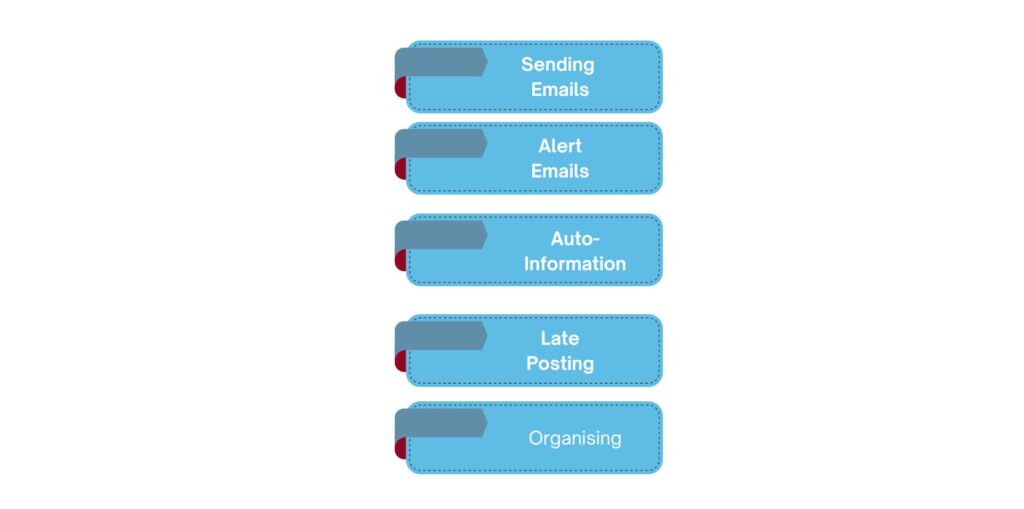Salesforce for marketing automation automates the management of multifaceted marketing campaigns and operations across several channels.
Employing automated communications across email, the web, social media, and text, organizations may target clients using marketing automation solutions. Workflows are a type of set of instructions that determine how automatically messages are sent. Workflows can be created from the start, established by templates, or changed in the middle of a campaign to improve results.

For online marketing campaigns and sales operations, marketing and sales departments employ marketing automation tools to automate them. This increases efficiency and boosts income. Employees can focus on higher-order issues and there is a decrease in human error when repetitive jobs are properly handled by automation.
Marketing Automation in CRM
Even though CRM and marketing automation software are two separate systems with different purposes, they are usually used together to maximize their advantages and combine their capabilities.
In addition, marketing automation gives your CRM the specific data it needs to give all organizational units valuable information about current and potential customers, what they want, what they don’t want, and how to offer them.
Before you can comprehend how they work together, you must first comprehend the distinctions between marketing automation and customer relationship management (CRM). Marketing automation is typically used for lead creation and nurturing, whereas CRM is mostly used for sales.
Therefore, combining them enables you to:
- Build a relationship before forwarding a lead to sales.
- To gain a thorough picture of what is and is not working, use closed-loop reporting.
- Put lead ratings on it.
- By offering a seamless transition from visitor to customer, you may aid sales personnel in understanding the overall picture of a lead’s interaction with your company.
- Use dependable messaging to encourage and nurture leads.
Can we easily use marketing automation software?
Yes! Usability is the key component of marketing automation tools. One-click can start a campaign. Control each element of your digital marketing plan from one central location.
Utilize drag-and-drop features from other apps you use frequently, as well as streamlined user interfaces.
All marketing tasks, from simple email distribution to intricate campaign management and data analysis, are made easier to manage through automation. Examples include
- All these tasks may be done from the same interface: schedule email blasts, design one-time campaigns, and maintain your subscriber list.
- Automated A/B testing of email campaigns can be used to determine which message generates the most discussion and interaction.
- Establish objectives and track all metrics, including click-through rates (CTRs), timing, channels, conversions, and more. From any device, assess progress and adjust as needed.
- Include online analytics and e-commerce data in your expanded perspective of your clients beyond CRM.
User of Marketing Automation tools

Sending Emails
Automatic messages will be delivered to the base at the most advantageous moment, such as two days before the promotion.
Alert messages
After the client completes a specific action, he will automatically receive emails, SMS messages, or notifications. To start the automatic sending of a series of letters on a pertinent subject, for instance, a person only needs to download a checklist.
Auto-information
Automated outbound calls enable you to fully automate client communication and marketing. This is a perfect chance, for instance, to let the client know about a forthcoming event.
Late posting
The right material can be published by a business at the appropriate time and location. To automate this process, there are numerous options available. The client will be aware of upcoming events, promotions, and other activities thanks to delayed publishing.
Organizing
Scheduling software and marketing automation complement each other nicely. Notifications, such as those that indicate when a report needs to be submitted, can help the marketing team work more efficiently.
Advantages of marketing automation
For your business, marketing automation can offer a wide range of advantages, such as the following:
Increased conversion rates
By guaranteeing that only clients who are interested in your business receive your material and by assisting you in creating relevant and compelling content, marketing automation software can help you increase your conversion rates.
Enhanced Effectiveness
The ability to manage tasks, give notifications to team members, automate schedules, and make inter-team communication simple are all advantages of marketing automation software. It also helps to identify issues in your workflows and improve operations.
Enhanced productivity
The fundamental goal of marketing automation software is to reduce the number of repetitive operations that your staff must perform by automating them, freeing up their time to focus on other, more crucial responsibilities. By making work easier for employees, automation can even assist increase employee satisfaction and engagement.
Personalized purchasing process
Marketing automation software can assist you in making sure that all your marketing content is customized to each customer by gathering customer information, examining user behavior, and capturing data that can be used in marketing campaigns. A great approach to draw in new clients and retaining current ones is using targeted, personalized content.
High Caliber Leads
More leads are not always better. Instead of focusing on a number, prioritize quality because these leads are more likely to become devoted clients. Marketing automation software assists you in locating the leads that have the highest likelihood of being converted by using a special lead score methodology.
By combining CRM marketing automation, you can maximize the potential of each tool’s capabilities and alter how you interact and connect with clients. Some instances are as follows:
- To organize and streamline your company’s prospecting and customer retention activities, combine key actions and information.
- obtaining more sophisticated customer journey information that may be used by sales and marketing to focus their efforts.
- preventing lost productivity and the waste of expensive resources on bad leads.
Communications in sales and marketing with prospects and customers frequently employ various languages or aim to address various pain areas. When CRM and marketing automation are integrated, visibility is increased, and messages are uniform and customized for various audiences.


